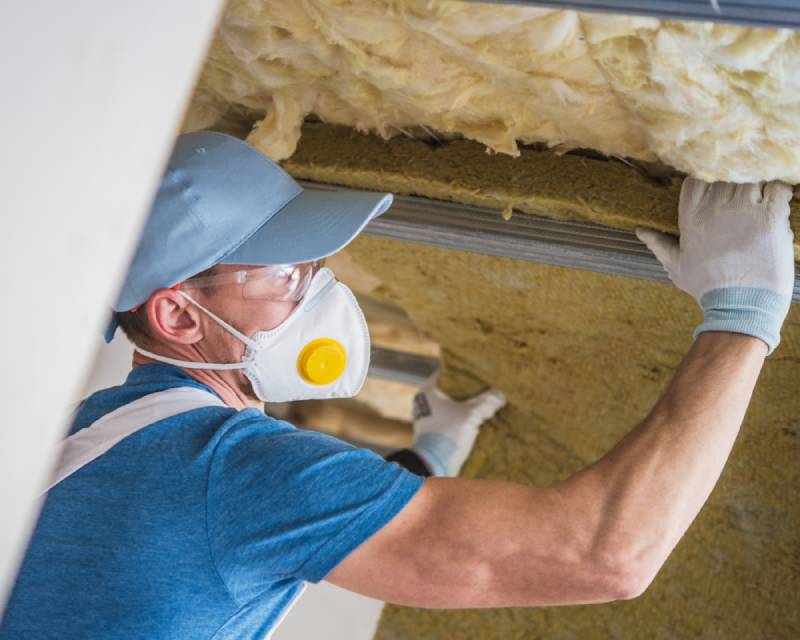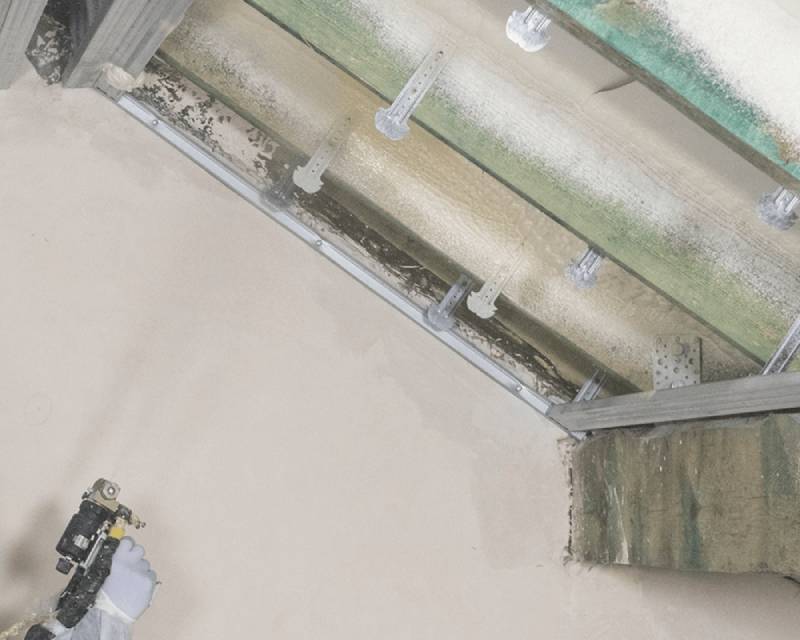A selection between foam or wool for attic insulation
A well-insulated attic or roof not only prevents heat from escaping in winter, but also protects rooms from overheating in summer. Due to such insulation, the energy efficiency of the entire building improves, and consequently you pay less for heating and cooling your home.
Of course, every building is different, just like every owner's individual expectations are different. Each roof is also different in terms of its construction, surface area or use. Therefore, there is no single universal solution for providing insulation. What should be used to insulate the attic - wool or foam? This is the most common question which arises when choosing an insulation material. No wonder, as both these materials currently dominate the market for building insulation. Each of them has both its advantages and disadvantages.
Mineral wool

Mineral wool is a porous material that retains air, making it one of the best insulating materials. Its porous and elastic structure provides very good sound insulation as well. In addition, it is non-combustible and does neither fuel fire nor spread flames. The most common type of mineral wool used in the construction industry is undoubtedly rock wool, which is the only mineral wool that can be used both for loft insulation, partition walls and external, plastered and ventilated walls, as well as for technical insulation and insulation of flat roofs.
PUR foam

PUR is polyurethane, which is an excellent material for spray insulation. It is obtained by mixing two raw materials - a polyol and an isocyanate. Combination of these two components, using special-purpose spraying machines, allows to obtain polyurethane foam.
PUR foams are widely used in building industry as an alternative and increasingly popular material for insulation and thermal insulation of buildings, from foundations to the roof. Purios E open-cell foam has flammability class E, but as part of its most frequent application, i.e. in the attic, it is covered with plasterboard. In such a partition it achieves the b-s1,d0 flammability class. The foam does not sustain fire and is self-extinguishing.
The biggest advantage of insulation made with the use of this technology is almost complete elimination of thermal bridges ( areas where due to joining different structural elements of the building local heat loss occurs). This is ensured by the foam structure itself, which is applied in the form of a liquid spray. By adjusting to the substrate, the foam reaches every gap, even the smallest ones. This ensures that the surface is thoroughly protected. After application, the PUR foam reacts chemically with carbon dioxide contained in the air, due to which it swells and significantly increases its volume.
Insulating the attic with wool or foam - lambda coefficient
Let us start with mutual features. In a way, thermal conductivity coefficient lambda (λ) is what foam and wool have in common. This is a value which shows how much heat passes during one second through 1m² of the material's surface, penetrating its 1m thick layer at a temperature difference of 1° on both sides. The lower the ʎ value of a material under certain internal or external conditions, the better its insulating properties.
Owing to the lambda coefficient you can determine, for example, the correct insulation thickness, which in turn affects the final cost of the entire heat-insulating budget. The lambda coefficient also determines how much usable space can be saved in the attic. The lower the coefficient is, the thinner the insulation layer can be, at the same time ensuring adequate thermal resistance of the partition, minimum energy consumption and more usable space.
In the case of the lambda coefficient (λ), any choice - foam or wool - will be a good one. Rock mineral wool, with a lambda coefficient (λ) as low as 0.033 W/mK, will satisfy even the most demanding building standards. Closed-cell PUR foam, on the other hand, has a low thermal conductivity coefficient (λ = 0.020 - 0.022 W/mK), while open-cell foam has a lambda value of (λ = 0.035-0.038 W/mK).
However, despite similar thermal conductivity values, polyurethane foam outclasses its competitor primarily due to its method of application. Why is that so?
The method of assembly/application of PUR foam versus wool insulation
In contrast to rather problematic fastening of wool mats with strings, PUR foam can be applied even within the most inaccessible gap, and it will adhere tightly to the substrate, eliminating any gaps or cracks from the space. Polyurethane foam provides excellent coverage, and therefore can be used, among others, for insulating foundations, floors, tanks, pools, and even pipes (closed-cell foam), and for insulating interior walls, roofs, and attics (open-cell foam).
PUR liquid foam is sprayed under high pressure onto the surface, to which it adheres automatically, forming a uniform insulation layer. After several seconds the foam starts to swell rapidly, filling all, even the most inaccessible spots and surface crevices. In the case of insulating large areas, such as an attic, PUR foam is applied using special devices operated by qualified workers, and the application of even 300 square metres of the material can be carried out in just one day.
What about wool installation?
In the case of rock mineral wool, the installation works should always start with measuring the distance between the rafters and then cutting wool pieces to fit between them. With this material it is usually required to install two layers of insulation. The first one has to adhere tightly to the attic structural elements, while the second layer of rock wool boards is placed under the rafters, collar beams or ties, between the load bearing profiles of the cladding.
Installation errors can happen during wool fitting, which prolongs the entire process and, most importantly, can lead to subsequent problems with thermal insulation of the attic. This concerns mainly careless cutting of the wool (wool laid too loosely will fall down under its own weight), forcing the wool in (there will be too much of it), inaccurate joining of the insulation to the roof and external walls or no insulation around roof windows.
This picture illustrates formation of thermal bridges on the roof

Heavy weight
There is no doubt that mineral wool is a heavy material, and for this particular reason it is also difficult to install it as it puts an additional load on the entire structure. PUR foam, on the other hand, especially in its open-cell form, is one of the lightest insulation materials currently available on the market (approx. 12kg/m3). The insulation layer made of this material does not burden the structure. This is particularly important if for some reason you cannot afford to increase the weight on the roof structure. If fast implementation is also important, PUR foam offers excellent performance.
The wool is delivered to the building site as board packets or large compressed rolls, into which the mats are rolled. Depending on the size and shape of the roof, from a dozen to even several dozen of such packages will be required, which means that appropriate transport logistics and storage space have to be arranged. It is also necessary to find a dry and airy place for the wool, preferably in the attic itself.
In the case of polyurethane foam such problems and requirements have not been encountered. What is more, PUR foam cures in a few seconds after it is sprayed, and after 48 hours the attic is fully usable (the insulation gains its full technical properties within several hours from application). This allows for very fast thermo-modernisation activities and almost immediate transition to further steps of renovation works.
Which one to choose?
What is the best attic insulation - foam or mineral wool? Quite a lot depends on your requirements.
Both materials have a low thermal conductivity coefficient, which makes them perfect for modern construction. However, if you want to insulate your attic as quickly as possible, PUR foam is unbeatable. A team of skilled technicians will complete the insulation within one or two working days, and a dozen or so hours later the insulation will have its full technical parameters. In case of wool this will probably be a much longer procedure.
Polyurethane foam is also a perfect solution when lightness of the structure is important. Spray insulation does overload neither the attic nor the roof itself, while at the same time it protects the house from cooling down. The advantages of this insulation can also be experienced in summer, especially in the attic, as PUR foam also insulates very well against high temperatures.

 This website uses cookies. By using this website, you consent to the use of cookies in accordance with your browser settings.
This website uses cookies. By using this website, you consent to the use of cookies in accordance with your browser settings.